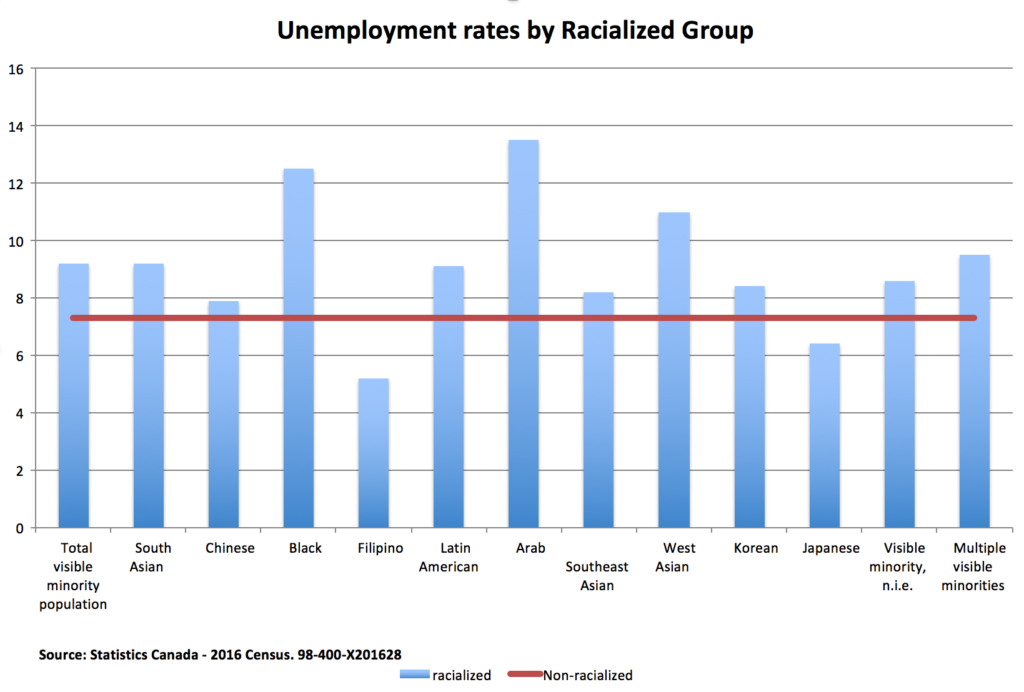Census data released by Statistics Canada today show us that racialized Canadians are more than willing to work but the barriers to finding employment that existed in 2005 remain firmly in place.
The labour force participation rate for racialized workers in 2016 was 66.5 per cent — almost two percentage points higher than non-racialized Canadians (64.8 per cent). That reflects a strong willingness to work.

But 9.2 per cent of racialized Canadians were unemployed in 2016, compared to 7.3 per cent of non-racialized Canadians. This gap has narrowed slightly since 2005, but only because the unemployment rate of non-racialized Canadians has risen.
All racialized communities, except those who identify as Japanese or Filipino, had a higher unemployment rate in 2016 than non-racialized Canadians.
There is variation among racialized groups:
- Those who identify as Arab had an 85 per cent higher unemployment rate than non-racialized Canadians in 2016;
- Those who identify as Black had a 71 per cent higher unemployment rate than non-racialized Canadians in 2016;
- In contrast, those who identify as Chinese had an 8 per cent higher unemployment rate than non-racialized Canadians in 2016.
Racialized women face more work barriers
Breaking the data down by gender shows the different ways in which race and gender interact. Racialized women had the highest unemployment rate in 2016, at 9.6 per cent. Non-racialized women had a lower unemployment rate at 6.4 than non-racialized men, at 8.2 per cent.
However, racialized women had a higher unemployment rate, at 9.6 per cent, than racialized men, at 8.8 per cent.
So racialized women continue to experience greater barriers in the labour market.
These barriers to work impact income inequality in Canada, where earlier Census data shows that the income gap between racialized and non-racialized Canadian isn’t budging. In fact, it’s worsened slightly: the average total income of racialized Canadians was 74 per cent of non-racialized Canadians in 2015—that’s a 26 per cent income gap. That is up from a 25 per cent gap in 2005.
Census data gives us important cues about Canadian life. The latest data makes it clear that Canada needs to get more proactive in breaking down the barriers to decent work for everyone, particularly racialized Canadians.
Other things that the latest Census release tells us about prime age workers (25-64) in Canada:
Workers are highly educated: 54 per cent of Canadians have a post-secondary education, up from 48.3 per cent in 2006 — leading industrialized nations. Immigrants, in particular, are well educated and more likely to have a doctoral degree.
So much for ‘freedom 55’: More Canadians are working past the age of 65 compared to 2006.
Most people commute to work: About 7.4 per cent of Canadians work from home, a drop from the proportion in 1996. So the majority of workers commute to work. In 2016, 12.4% of Canadian workers commuted by public transit and 6.9% of commuters in Canada walked to work. The vast majority, 79.5 per cent, drive to work.
Sheila Block is a senior economist with the Canadian Centre for Policy Alternatives. Follow Sheila on Twitter: @SheilaBlockTO






